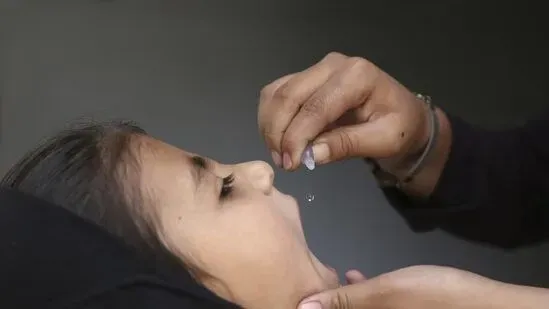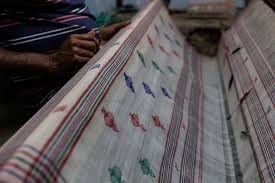About Vaccine-derived poliovirus:
- It is a documented variant of poliovirus that originates from the strain used in the oral polio vaccine (OPV).
- The OPV includes a live, weakened poliovirus that temporarily replicates in the intestine, stimulating the immune system to produce antibodies and develop immunity.
- Understanding Vaccine-Derived Polio (VDPV)
- Vaccine composition: The Oral Polio Vaccine (OPV) contains a weakened form of the poliovirus, which stimulates an immune response.
- cVDPV development: On rare occasions, in under-immunized populations, the excreted vaccine virus can circulate, undergo genetic changes, and potentially revert to a form capable of causing paralysis. This is known as circulating vaccine-derived poliovirus (cVDPV).
- Global context: Since 2000, over 10 billion doses of OPV have been administered globally, resulting in 24 cVDPV outbreaks in 21 countries, with fewer than 760 cases.
- Prevention: To stop cVDPV transmission, WHO recommends multiple rounds of high-quality immunisation campaigns.
- Key Facts about Polio:
- Polio overview: Polio is a viral infectious disease that can cause irreversible paralysis and even death by affecting the nervous system.
- Wild Poliovirus strains: There are three distinct strains of wild poliovirus:
- Wild Poliovirus Type 1 (WPV1)
- Wild Poliovirus Type 2 (WPV2)
- Wild Poliovirus Type 3 (WPV3)
- Although symptomatically similar, each strain has genetic and virological differences, necessitating separate eradication efforts.
- Transmission: The virus primarily spreads through the fecal-oral route and can multiply in the intestine, where it can invade the nervous system. It predominantly affects children under five.
- Available vaccines:
- Oral Polio Vaccine (OPV): Administered as a birth dose, followed by three primary doses at 6, 10, and 14 weeks, and a booster dose at 16-24 months.
- Injectable Polio Vaccine (IPV): This vaccine is given as an additional dose along with the third DPT (Diphtheria, Pertussis, and Tetanus) vaccine under the Universal Immunization Programme (UIP).
India’s polio-free status: India was declared polio-free by the World Health Organization (WHO) in 2014, with the last wild poliovirus case reported in 2011.
Q1. What is a vaccine?
A vaccine is a biological preparation that stimulates the body’s immune response to specific diseases. It can be administered via needle injections, orally, or as a nasal spray, helping the immune system recognize and fight pathogens effectively.
Source: Centre says Meghalaya polio case is vaccine-derived – The Hindu
Last updated on December, 2025
→ Check out the latest UPSC Syllabus 2026 here.
→ Join Vajiram & Ravi’s Interview Guidance Programme for expert help to crack your final UPSC stage.
→ UPSC Mains Result 2025 is now out.
→ UPSC Notification 2026 is scheduled to be released on January 14, 2026.
→ UPSC Calendar 2026 is released on 15th May, 2025.
→ The UPSC Vacancy 2025 were released 1129, out of which 979 were for UPSC CSE and remaining 150 are for UPSC IFoS.
→ UPSC Prelims 2026 will be conducted on 24th May, 2026 & UPSC Mains 2026 will be conducted on 21st August 2026.
→ The UPSC Selection Process is of 3 stages-Prelims, Mains and Interview.
→ UPSC Result 2024 is released with latest UPSC Marksheet 2024. Check Now!
→ UPSC Prelims Result 2025 is out now for the CSE held on 25 May 2025.
→ UPSC Toppers List 2024 is released now. Shakti Dubey is UPSC AIR 1 2024 Topper.
→ UPSC Prelims Question Paper 2025 and Unofficial Prelims Answer Key 2025 are available now.
→ UPSC Mains Question Paper 2025 is out for Essay, GS 1, 2, 3 & GS 4.
→ UPSC Mains Indian Language Question Paper 2025 is now out.
→ UPSC Mains Optional Question Paper 2025 is now out.
→ Also check Best IAS Coaching in Delhi

















